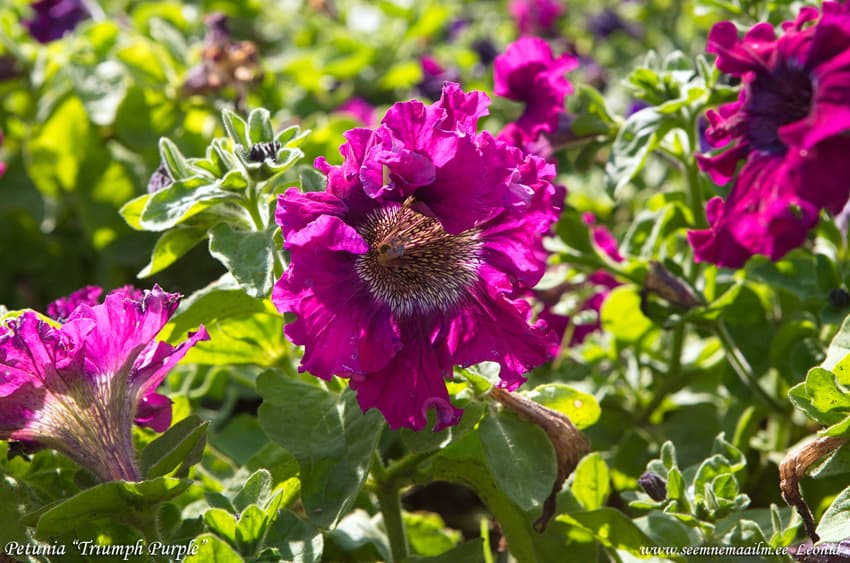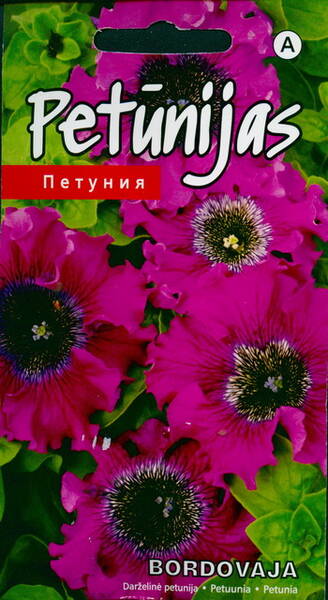Ex Tax: 2.04€
It has stunning flower colors with lovely wavy and fringed edges. Has all the positive characteristics expected from a modern petunia. Particularly attractive for its short growing period, long flowering and hardiness. It works well in soil, container decor. Transplant perfectly tolerates in a flowering state.
An improved and spectacular petunia with a completely unique giant flower shape that reaches 16 cm in size.
It has stunning flower colors with lovely wavy and fringed edges. It has all the positive characteristics expected from a modern petunia.
Particularly attractive with a short growing period of seedlings, long flowering and endurance. Works great in the ground, container decor.
Perfectly transfers transplant in a flowering state.
Sowing: February - April for seedlings.
Seeds in granules! In order to facilitate the sowing and cultivation of small-seeded crops, a system has been developed to cover each seed with a special composition. At hit of moisture on a granule - the cover is scattered. Granules are placed on the surface of slightly compacted and moistened soil, without covering them, moistened with a sprayer, covered with glass and kept at a temperature of + 20 + 24 ° C, preventing the shell of the granule and compost from drying out until the seedlings germinate and, periodically, removing from the surface of the glass drops of condensate.
Shoots appear only in the light (excluding direct sunlight) for 10-15 days. After the appearance of the first true leaf, the crops are aired and then the glass is removed, gradually reducing the temperature to + 14 + 16 ° С. Seedlings do not tolerate waterlogging. Hardened seedlings are planted in the ground after the end of spring frosts at a distance of 15-20 cm.
Care: petunia grows best in well-lit places with light, fertile soil. Responds gratefully to watering and regular feeding.
Flowering: June to frost.

Petunia life cycle: perennial herbaceous or semi-shrub plant, cultivated as an annual. The seeds are very small, in large-flowered forms there are about 5000 pcs. in 1 g, in small-flowered forms - 10,000 pieces.
Sowing: in Estonian conditions, petunia is sown in the second half of March (for earlier flowering - at the end of January-February). The soil mixture should consist of humus, soddy or leafy soil, peat and sand (2:2:2:1). After mixing and sieving, the boxes are filled with the mixture, watered with a solution of foundationazole and sown in a day. Small seeds are mixed with sand and scattered over the surface, then watered with a spray bottle, covered with glass and kept at a temperature of +20..+23 °C.
Growing seedlings: after germination, seedlings are sprayed 1-2 times a day with water, foliar top dressing with complex fertilizers is carried out, with a lack of light they are illuminated. When 1-2 true leaves appear, dive into peat pots or cassettes filled with the same soil mixture as for sowing.
Seedling care requires special attention: watering, loosening the soil, weekly fertilizing with nitrophoska or kemira (20 g per 10 l of water). If the seedlings develop poorly, then they are sprayed with growth stimulants: zircon, humate, epin.
Soil: in open ground, petunia is grown on loose nutrient soils with a neutral reaction.
Landing: in a flower bed, the distance between plants should be 15-30 cm, when grown on a balcony - 1.5 times closer. After planting, the soil is mulched with peat or humus, watered.
Care: a week after planting start top dressing. Until the end of flowering, petunias need to be fed every 10-15 days. Complex fertilizers are used (20 g per 1 liter of water), and only at the beginning of growth, with poor plant development, they are replaced with mullein infusion (1:10) or humic fertilizers. Flowering petunias are watered carefully, under the root. Faded flowers are removed so as not to disturb the decorativeness of plants.
Usage: in flowerbeds, borders, borders; also planted on balconies.












